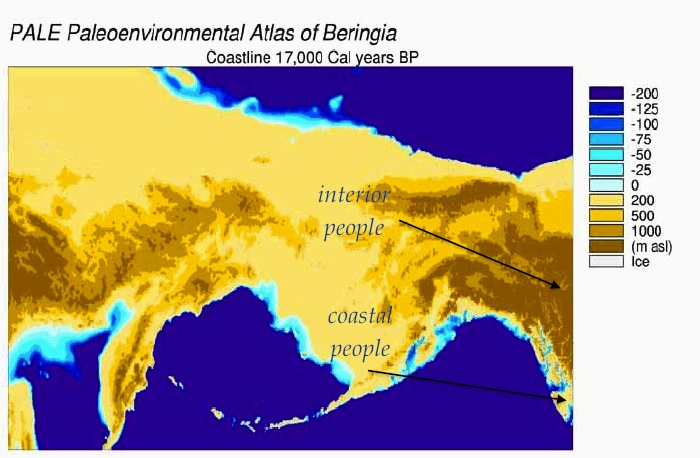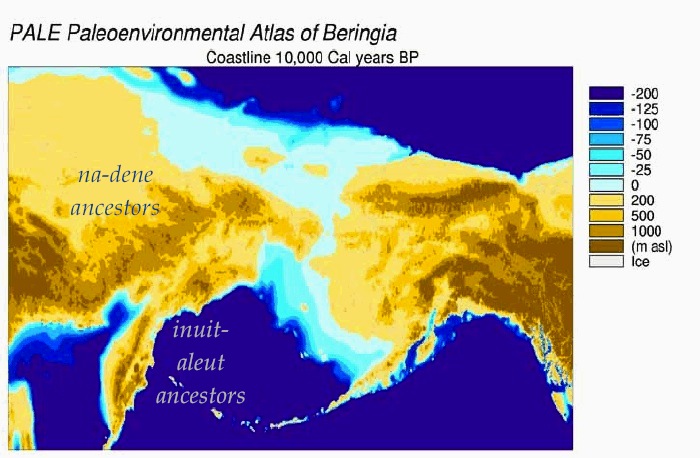The coastal people contributed the most to the genetics of the native American people. Most are in the Q yDNA haplogroup, mostly Q-M3, about 77% in North America and 83% in South America. mtDNA is more varied, but consists primarily of A2, B2, C1, and D1. A is common throughout Asia, with A2 most common in Chukotko-Kamchatka (far-eastern Siberia); B is also common, but the subclade most similar to American B2 is found primarily in South China, Taiwan, and the Philippines; C is found in Siberia, especially among the Yukaghirs and Nganasans; and D is found throughout Asia, especially among the Japanese, Korean, Mongol and Tungus populations. Most Native Americans are blood type O.
Although there is much overlap with the genetics of the coastal people, the descendents of the northeastern interior people have some differences as well. Many of them are in the R1 yDNA haplogroup, with the Ojibwe as high as 79%. Some tribes of Na-Dene people also have as much as 50% R1, as do the Muskogean Seminoles and the Iroquoian Cherokee. The mtDNA includes most of the coastal haplogroups, but among the Algonquian tribes as much as 25% carry the X2a haplotype. Finally, eastern woodland tribes are more likely than others to be blood type A, albeit not as likely as the Na-Dene or Aleut-Inuit.
Because Q yDNA and A, B, C, and D mtDNA are also found in much of eastern and northern Asia (and are by far the most common among native Americans), while R yDNA and X mtDNA are more common in western Eurasia, some have hypothesized that the people of the eastern woodlands descend from Europeans of the Solutrean culture who managed to cross the Atlantic at about the same time as the Beringians entered the Americas. This is supported by the similarity of the Clovis technology to the Solutrean. However, this is not taken seriously by the majority of experts, who believe that the X mtDNA may have more easily derived from central Siberia, and the R yDNA is more likely from European admixture.
Roughly half of the Na-Dene carry the Q yDNA, especially Q-M242 rather than the Q-M3 of other native populations. This suggests that they may be related to the Yenisean people (now represented solely by the Ket). C yDNA is also high - up to 42% - which suggests a relation to the Tungus/Turkic/Mongol people. They have a mix of O and A blood types.
The Aleut-Inuit people tend to be of the Q yDNA group at between 46 and 80%, and have a greater balance of all the blood types. Genetically, they are more similar to the Chukchi and Koryak, as well as some north-eastern Turkic people.




 ? European sitting back like "Thank god black folks believe they are all egyptian kings and queens. Would hate to have them ask us for land
? European sitting back like "Thank god black folks believe they are all egyptian kings and queens. Would hate to have them ask us for land "
"
